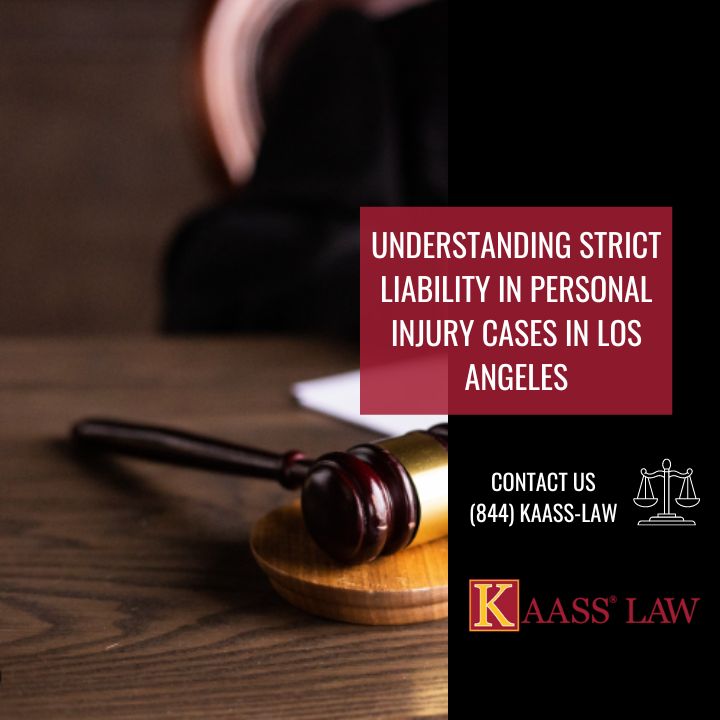Los Angeles, known for its bustling traffic, often becomes the backdrop for personal injury cases due to the inevitability of accidents, even under optimal conditions. The complexity of these cases often shrouds the legal concept of strict liability, crucial for determining responsibility and damages. This comprehensive guide will delve into the historical development, applications, and implications of strict liability in personal injury cases within the framework of Los Angeles law. Special attention will be given to its impact on both defendants and plaintiffs.
What Does Strict Liability Mean?
Strict liability is a legal principle that assigns responsibility to a party for damages or injuries resulting from their actions, irrespective of fault or intent. This implies that even if the defendant exercised caution and diligence, they remain accountable for any harm inflicted. In negligent cases, for example, the plaintiff must demonstrate a breach of duty of care by the defendant. However, strict liability holds the defendant liable solely based on their participation in the activity that caused the injury.
Beginnings and Development
The English common law is where the idea of strict liability first appeared. It was used in situations involving dangerous animals or risky activities. Over time, legal experts have expanded the doctrine to encompass various situations. The examples are certain statutory offenses, ultrahazardous activities, and product liability.
Strict liability is a legal concept in California. Several statutes and case laws outline this, providing a framework for legally holding individuals accountable for their actions. For instance, California Civil Code § 1714 specifies that individuals and organizations typically bear liability for harm resulting from their negligence or intentional wrongdoing. California Civil Code §§ 1714.10-1714.30 codifies the state’s strict product liability laws, which hold manufacturers, distributors, and retailers accountable for any harm caused by defective products, regardless of fault.
Personal Injury Cases
Personal injury cases can result in the defendant being held strictly liable. This happens when their actions involve a high risk of harm or are inherently dangerous. Here are some examples:
1. Dog Bites. In California, the law holds dog owners accountable for any injuries caused by their pets. The are also responsible if they don’t know about the aggressive behavior of their animal. If a dog attacks someone, the owner can be accountable for the damages.
2. Dangerous activities with an elevated level of risk. Authorities consider blasting, storing hazardous materials, and keeping wild animals as risky activities. Individuals or businesses engaging in such actions may face responsibility for any resulting injuries or property damage, regardless of whether they took precautions to prevent harm.
3. Defective Products. Manufacturers, distributors, and retailers may bear responsibility for injuries resulting from faulty products. This encompasses products with design or manufacturing defects, or inadequate warnings or instructions. In such instances, the injured party doesn’t need to demonstrate the defendant’s carelessness. They only need to establish that the defective product caused their injury.
Guiding a Strict Liability in Los Angeles
Everyone in a metropolis the size of Los Angeles must grasp strict liability. It particularly those vulnerable to harm from faulty products or the actions of others.
Strict liability can facilitate receiving compensation for injuries if harmed. It’s simpler than other types of cases because all one must do is prove harm from the product or another person’s actions. No evidence of improper or careless behavior by them needs to be provided. This suggests that obtaining the necessary funds may be quicker.
If someone, such as a business owner, could be accountable for the harm suffered by someone else, they should exercise extra caution. Even without intending harm, they might still be held accountable for the injuries. As a result, following safety regulations is essential. This can lessen the likelihood of being responsible for someone else’s injuries.
Legal Considerations
Guiding strict liability in personal injury cases requires a thorough understanding of California law and legal precedent. In order to prove causation and show that the defendant’s actions or the defective nature of the product directly caused the plaintiff’s injury, the plaintiff must gather enough evidence. This may involve obtaining medical records, eyewitness testimony, expert opinions, and other documentation to support their claims.
Defendants also need to be ready to put up a strong defense against claims of strict liability. This may involve challenging the plaintiff’s evidence, arguing that the injury was not caused by the defendant’s actions or product, or invoking any available legal defenses, such as the assumption of risk or unforeseeable misuse of the product.
Conclusion
Strict liability in personal injury cases is a dynamic legal environment in Los Angeles. It necessitates careful consideration of pertinent laws, precedents, and evidence. Whether you’re a defendant facing accusations of strict liability or a plaintiff seeking damages for your injuries, you need to consult with knowledgeable legal experts. Only they can explain your rights and options.
Individuals and businesses can effectively navigate the complexities of personal injury litigation. Also, by understanding the nuances of strict liability and collaborating with knowledgeable attorneys, they can ensure that justice serves all parties involved.

